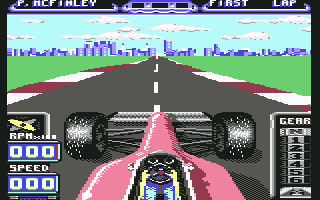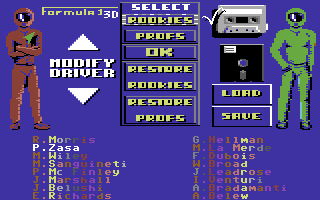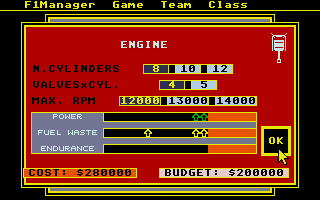

In its very first iteration, the company’s address and phone number were those of the journalist’s home.

The two would become partners in the company that was, naturally, called after Francesco Carlà’s dream world (“mondo” in Italian) of simulation: Simulmondo. Not really experienced in management, Carlà asked for help and economical support from Riccardo Arioti, Mario Arioti’s (of infamous Armati cassettes and manager of publishing company Italvideo) son, who had already taken an interest in his dad’s company and knew the in’s and out’s of releasing videogames in Italy. Soon enough, he had some significant progress to show and that’s when Carlà decided it was time to take the first steps in creating a company.

Ivan went home and rose the next morning a sadder and wiser man, bent on getting better so he could compete in the big leagues. Then Carlà, not impressed with Venturi’s bedroom creations, loaded Palace Software’s Cauldron 2 and told the bright-eyed kid: “this is how games are supposed to be designed or you’re going nowhere”. The journalist took a shining to the kid, since there was not a huge age difference between the two, and was happy to peruse all his Commodore 64 adventure games. He had no experience in managing a company nor any technical background indeed, it all seemed impossible, until the day he met Ivan Venturi.Ī talented game designer even from a very young age, Ivan ended up meeting Francesco Carlà through one of his friends and his brother.
F1 MANAGER SIMULMONDO HOW TO
He decided that he would devote his life to creating this futuristic land, but he didn’t know how to even begin making that vision come to life. William Gibson in Neuromancer called it “virtual reality”, Carlà called it “Simulmondo”: literally translated, a world of simulation.

He recalls the idea came to him while in a London hotel room: a mental projection of a virtual world entirely made out of videogames characters that would directly respond to the player’s actions and commands. Most of all, though, the man had a dream: an image in his head that haunted him every night. He was the first to go on national television to talk about his favorite medium, being featured on several programs from the mid-eighties up until the nineties. Carlà was obsessed with the medium, in 1984 he was already seeing the future and realized it was time to take video games seriously, instead of treating them like toys. Son of an entrepreneur, he graduated with a thesis on videogames – “The history of videogames from 1971 to 1987” published in 1990 – while also working as a journalist and editor for several Italian magazines. Simulmondo’s history begins – and ends – with Francesco Carlà. Why were those amazing ideas not enough to keep the company afloat? To find out what happened, I’ve reached out to several people involved with Simulmondo and found out that, even though 20 years have passed, some cuts do not ever really heal and the scars are never forgotten. But, chances are, dear reader, you are not familiar at all with that name.
F1 MANAGER SIMULMONDO SOFTWARE
Simulmondo was the first Italian software house that managed to develop and self publish its own games, anticipating several contemporary marketing ideas among them, episodic games. It happened to Michelangelo, it happened to Pollock and it happened with Simulmondo. It’s a timeless tale, used in books and screenplays: the desperate toil of a striving artist to make his work known, while the world’s business owners and managers are bent on castrating it only to profit off the poor soul’s internal struggles. Throughout 2000 years of human history, ever since mankind understood how to package and sell a work of art, a single struggle has resisted, immortal, rearing its ugly head time and time again: the artist against the system.


 0 kommentar(er)
0 kommentar(er)
